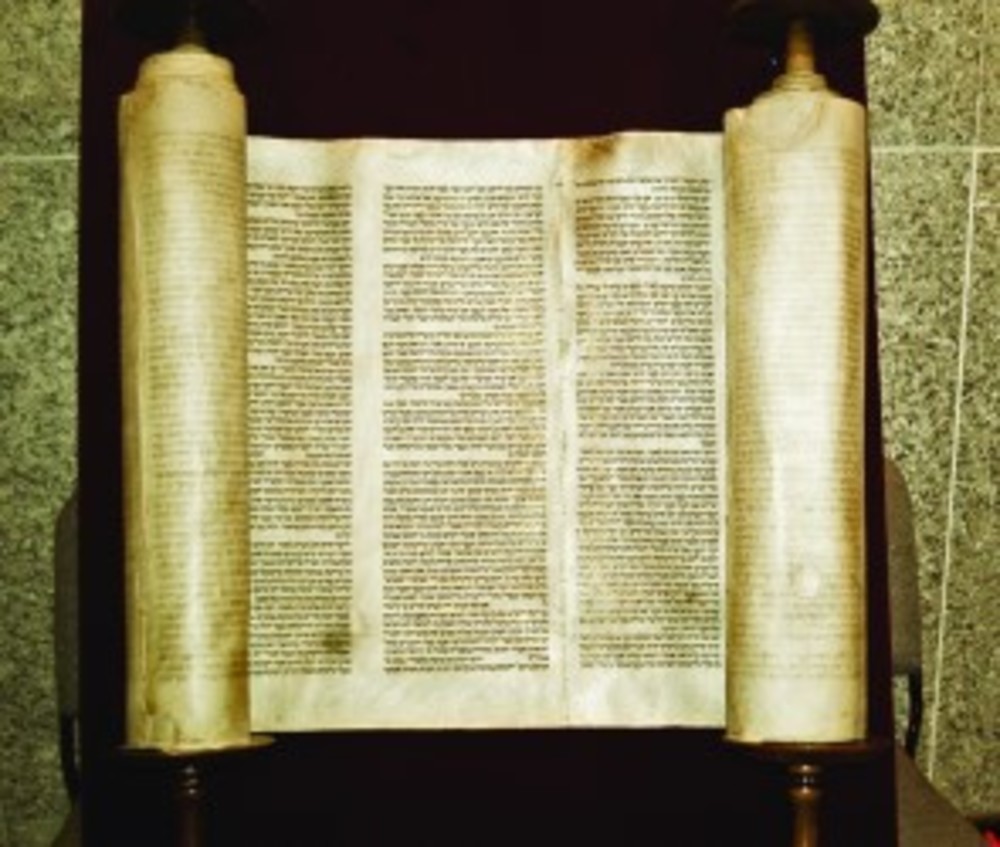The Czech Torah scrolls
Boston temple members honor the memory of Holocaust victims
 During World War II, the Nazis permitted Prague’s Jews to sort, classify and catalog the Jewish Museum’s Torah scrolls, which were part of a collection that contained numerous ceremonial objects. Sadly, before they could finish the task, the Jews were deported to death camps, where all but two died. Unlike the Jewish victims of the Holocaust, the Torah scrolls survived.
During World War II, the Nazis permitted Prague’s Jews to sort, classify and catalog the Jewish Museum’s Torah scrolls, which were part of a collection that contained numerous ceremonial objects. Sadly, before they could finish the task, the Jews were deported to death camps, where all but two died. Unlike the Jewish victims of the Holocaust, the Torah scrolls survived.
Moved from the (renamed) State Jewish Museum to Michele Synagogue, they remained there in danger of perishing akin to their prior caretakers. In order to maintain proper form, the scrolls must be rolled on a regular basis. Since that’s not easy to do with more than 1,500 Torahs, something had to be invented to save them from decay.
Chimen Abramsky, a historian and an expert on Judaica who examined the Torahs, burst into tears upon seeing the dying scrolls – ones lacking protective covering, wrapped in ripped shawls and tied with children’s belts. In 1963, Ralph C. Yablon purchased the 1,564 scrolls and arranged to transport them to London, where the Westminster Synagogue became the official trustee for the collection.
On Feb. 5, 1964, a newly organized Memorial Scrolls Committee received the scrolls in their new headquarters in the Kent House, the synagogue’s annex. Each one was numbered and placed into a corresponding compartment within specially built racks. Once the scrolls were registered, scribes performed a detailed assessment to classify each scroll into one of five categories that ranged from “best” to “unusable.”
The committee soon realized that part-time scribes were insufficient to repair the scrolls. Just as a search for a devoted and competent full-time scribe was underway, David Brand – an Israeli looking for work – arrived at the synagogue and asked if it had any scrolls he could restore. The Czech Torah Network quotes Memorial Scrolls Committee Honorary Secretary Ruth Shaffer as saying, “I shall never forget the look of astonishment and awe on his [Brand’s] face when he saw those three rooms stacked to the ceiling with sifre Torah.” Brand’s family joined him in London after he agreed to dedicate himself to the project.
Not only the scrolls themselves but also their accessories, such as wooden rollers and wimples (linen binding strips bearing the name of the original donor and the date of the scroll’s presentation to the synagogue), were repaired. Hundreds of visitors viewed the scrolls, or “corpses in transparent shrouds,” as one visitor referred to the Torahs. However, these scrolls were far from dead – they were living evidence of the power of endurance despite all odds. Many Holocaust survivors grew emotional and wept upon seeing their tangible counterparts.
Countless synagogues, Jewish organizations and individuals contacted the committee to request a Torah scroll, which prompted its members to establish a procedure to offer the scrolls on a permanent loan. The Westminster Synagogue and its Memorial Scrolls Trust distributed the scrolls to synagogues around the world. Among them was Temple Israel of Boston, a synagogue that received their Blatna (a village in the Czech Republic) scroll in 1975.
One of the temple’s members, Russell Kushner, recently visited the Dwares JCC. While in the building, Kushner stopped by the Holocaust Education and Resource Center of Rhode Island to examine its scroll, donated by Dr. Richard and Lynn Glick. Kushner’s interest was spurred by his recent trip to Prague and London to commemorate the 50th anniversary of the restoration of the Czech scrolls. He shared that he, along with nearly 30 other Temple Israel members, traveled to Terezin, the site to which the Blatna Jews were transported, and participated in the Czech Memorial Scrolls Commemorative Service at the Westminster Synagogue. Kushner watched the procession of more than 50 Torahs, whose rescue was celebrated through song and prayer.
The Temple Israel members shared their experiences and feelings on a blog devoted to the trip. They wrote about unusual undertakings, such as ensuring their scroll’s safety on a plane, and powerful moments, including watching the processional of 54 scrolls from around the world. In one of the entries, Michele Fishel quotes Kathy Weinman, president of Temple Israel, who felt that the service resembled “a reunion of long-lost friends.” Fishel describes the individuals carrying the sacred scrolls to the tune of Mahler’s “5th Symphony”: “With each step they took, you sensed a determination to keep moving, to honor these memories and the words of the Torah in the present and into the future.” Ellen Rovner writes of trying not to cry too loudly and shaking during the procession because of the overwhelming emotion she experienced: “I feel joy and deep love.”
The ceremony not only honored the victims who perished in Terezin but also reaffirmed the strength and the will of the Jewish people. The inmates risked everything to make extra carbon copies while compiling inventories. Preserving memories for generations to come, they made sure that records of the past remained. Temple Israel’s members paid a tribute to these courageous Jews. As Cam Kerry shared in a blog entry: former Temple president Carol Michael said, “There’s something life-affirming about this … that we can be here, remembering them.
You, too, can remember. Visit the scroll at the Holocaust Education and Resource Center, whose mission is “to teach the history of the Holocaust in order to promote human dignity and justice, and to serve as a memorial to its victims.”
IRINA MISSIURO is a writer and editorial consultant for The Jewish Voice.







